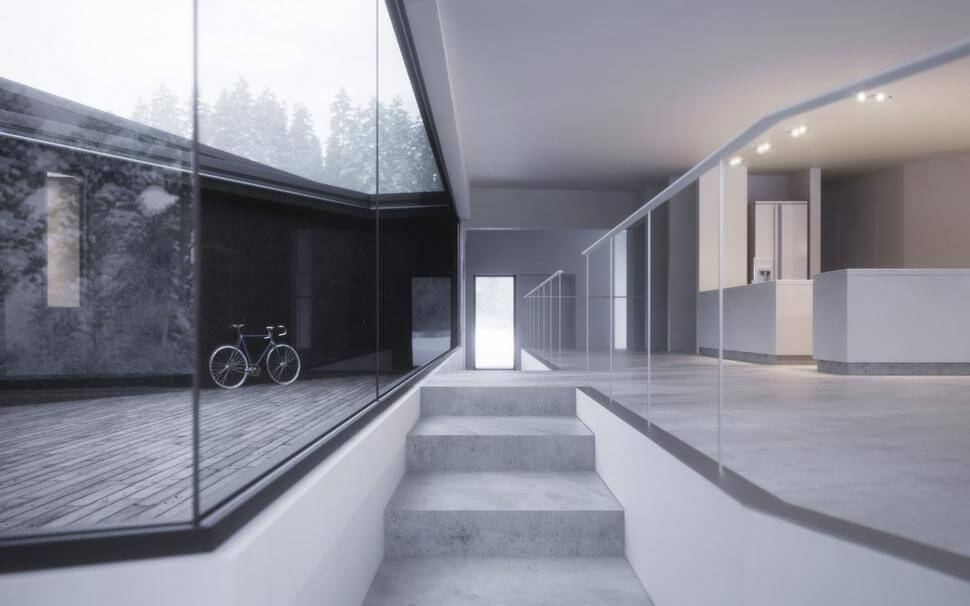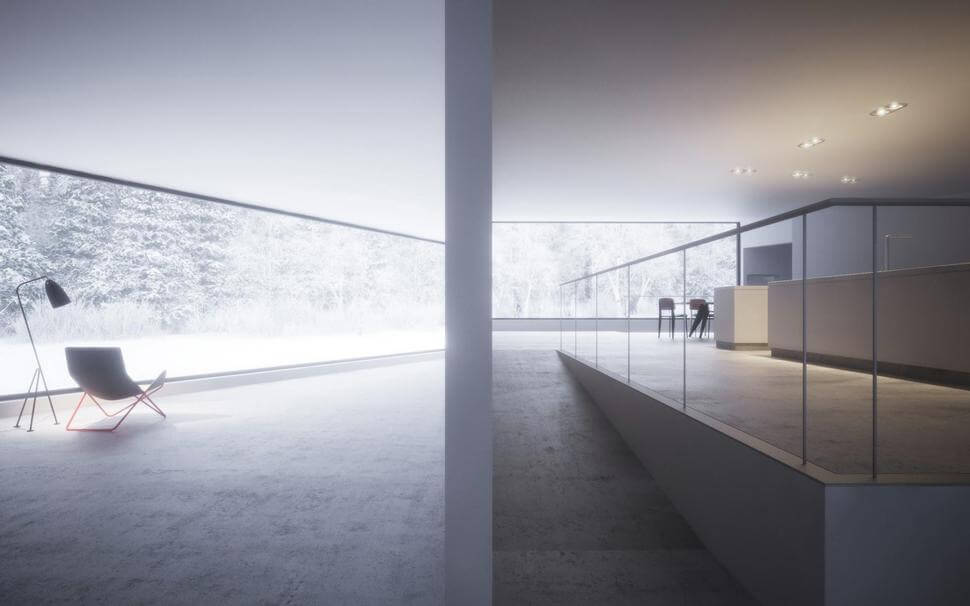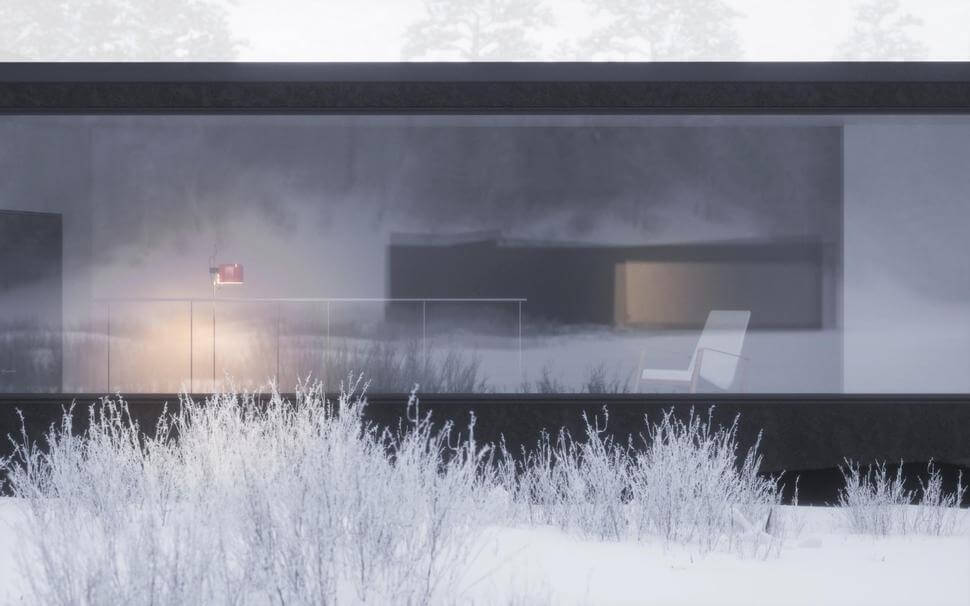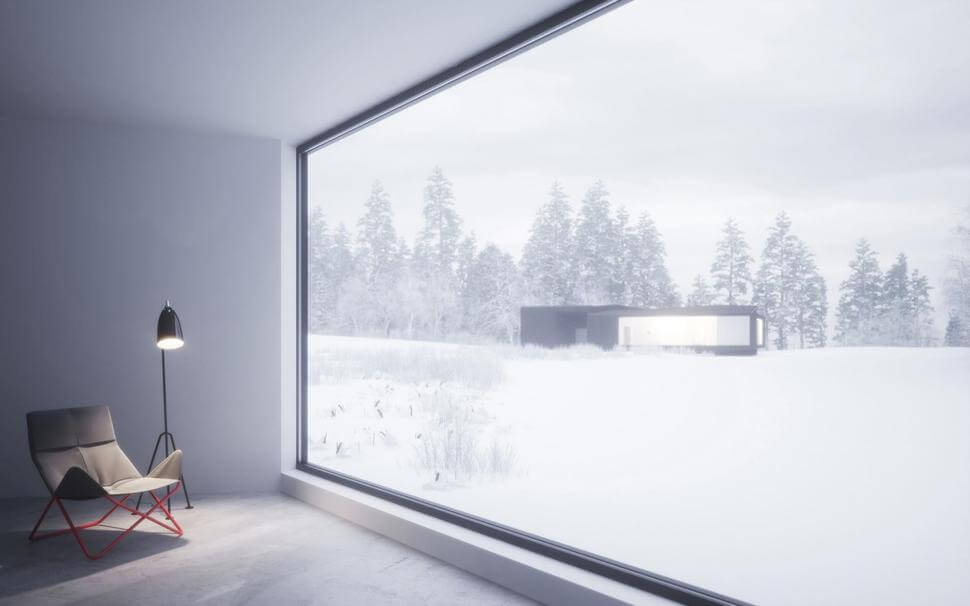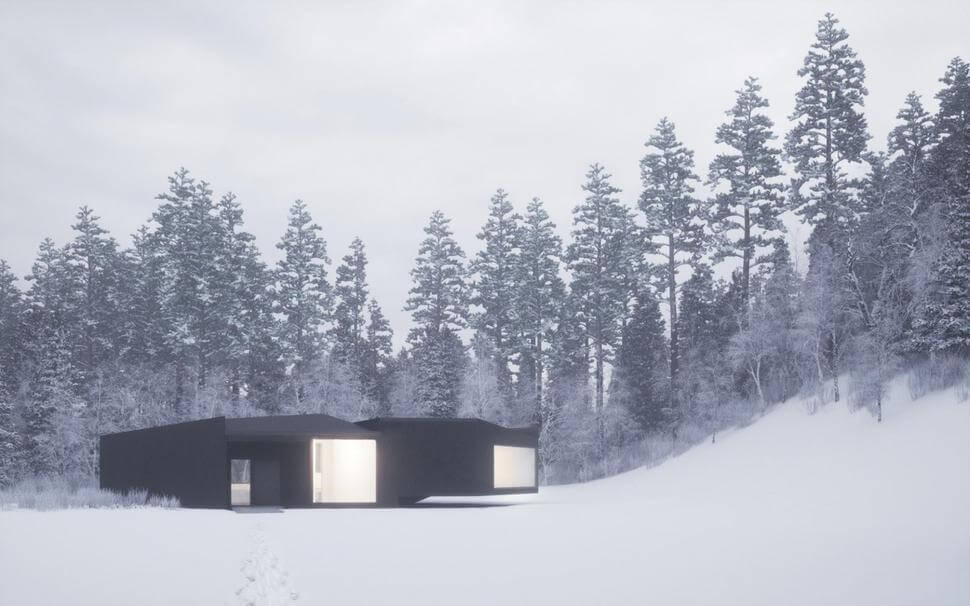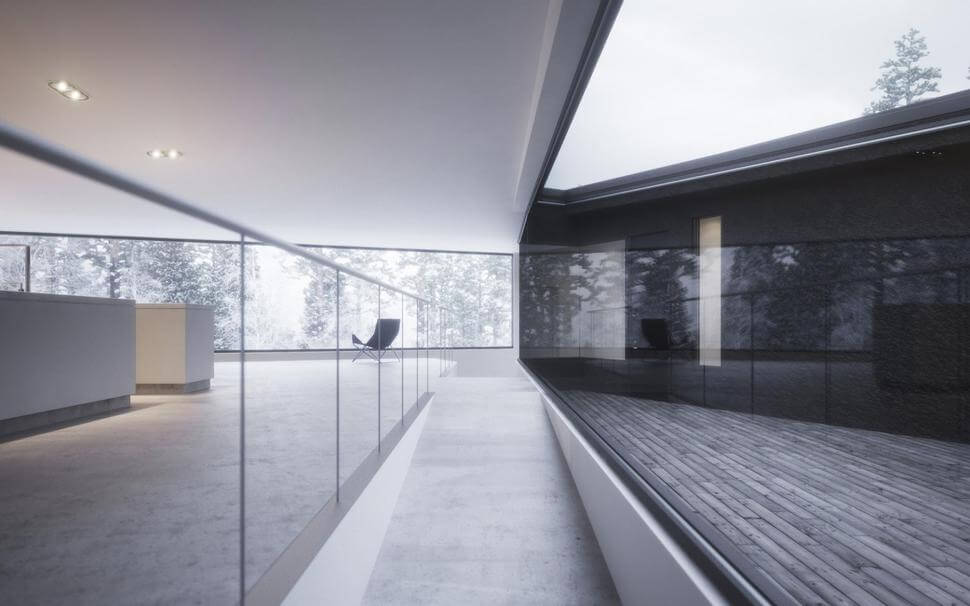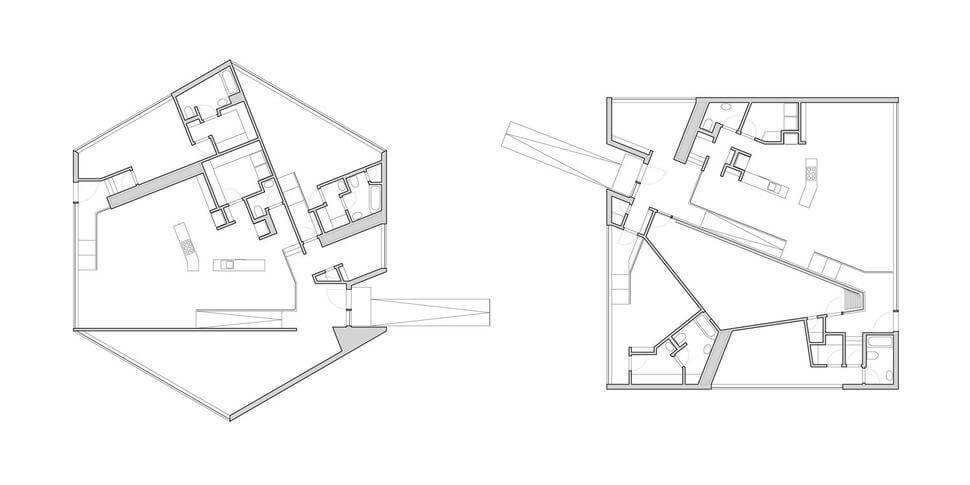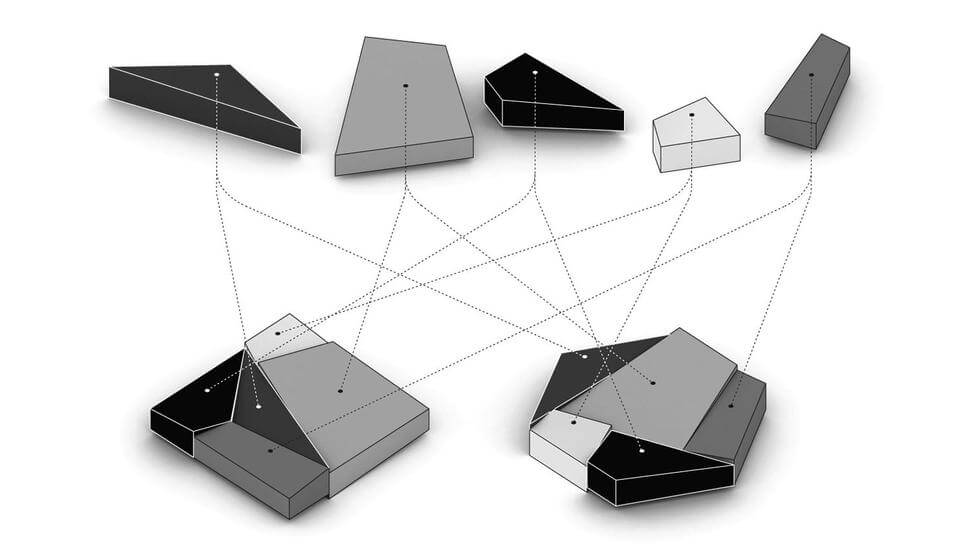William O’Brien Jr. was approached by a pair of buddies to design vacation homes for each of their families on one plot of land in NY, USA. The brothers wanted their homes to be the same but another and wanted the concept to turn around the mathematical idea that two polygons of equal areas can be divided into sets of related shapes. The idea was to use minimal division to perform the least number of parts per polygon. Adding to the mathematical plan of the site is the landscaping between the twin homes of four different crops with four different harvesting seasons; leaf vegetable, berries, wheat and corn.
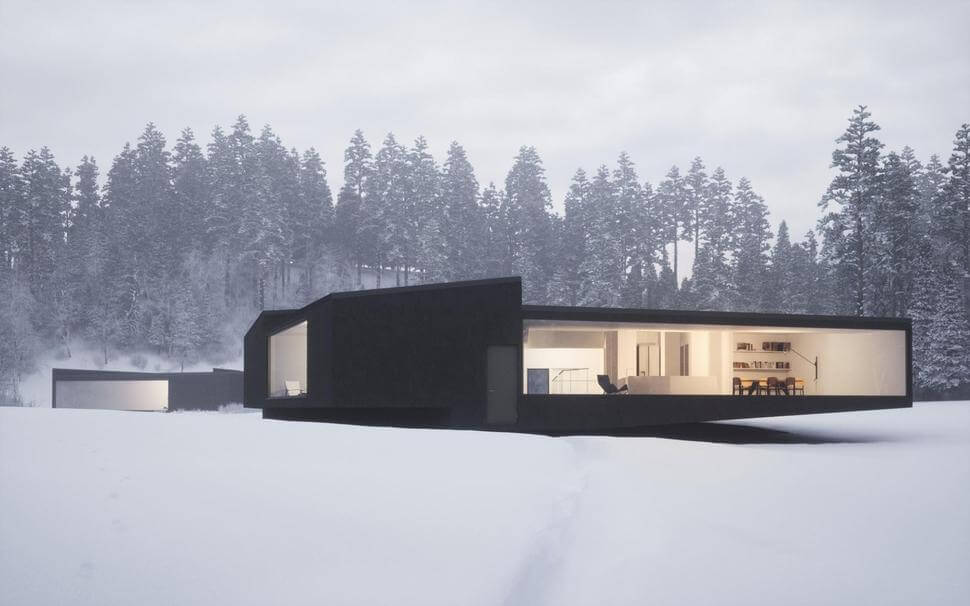
Each of the Twin houses made of the same five shapes – four trapezoids and one triangle, each group of shapes is combined differently, but each is used for related functions. While the forms and features of the interior volume are similar, the exteriors present entirely different profiles. One is a four-sided polygon in the shape of a square, and the other is a six sided polygon in the form of a hexagon. Other words, the twin homes are fraternal and not identical. The unusual triangle shape within each home is meant to be a screened in porch on the hexagonal twin and a sunroom in the centre of the square twin. The facades of the home are presented as simply as possible to maintain their abstract mathematical stories. Exhibited as three-dimensional geometric packages, a rubber roofing system limits the detail as does the dark stucco used on the sides and underbelly of each twin.
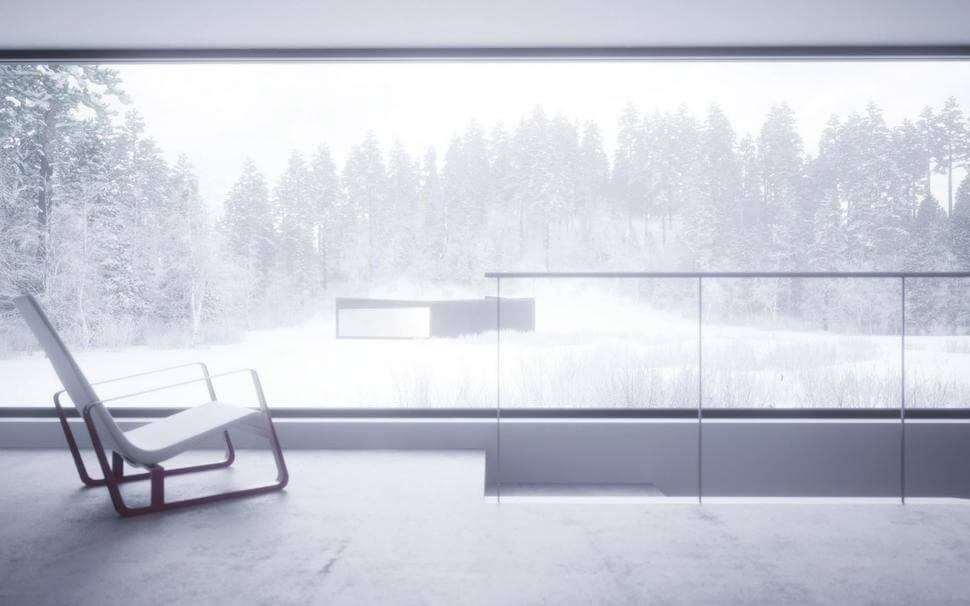
Both homes are designed with a long ramp that starts just past the back door and follows the line of the kitchen in the social zone. The social area in each home is four steps higher than the back door, and the front foyer and the ramp connect the two different levels. In the square twin, the ramp landing is short before arriving at a small flight of stairs that takes you down to the front foyer. In the plaza twin, another short flight of stairs just off of the back door leads up to a room overlooking the garden.
via trendir
